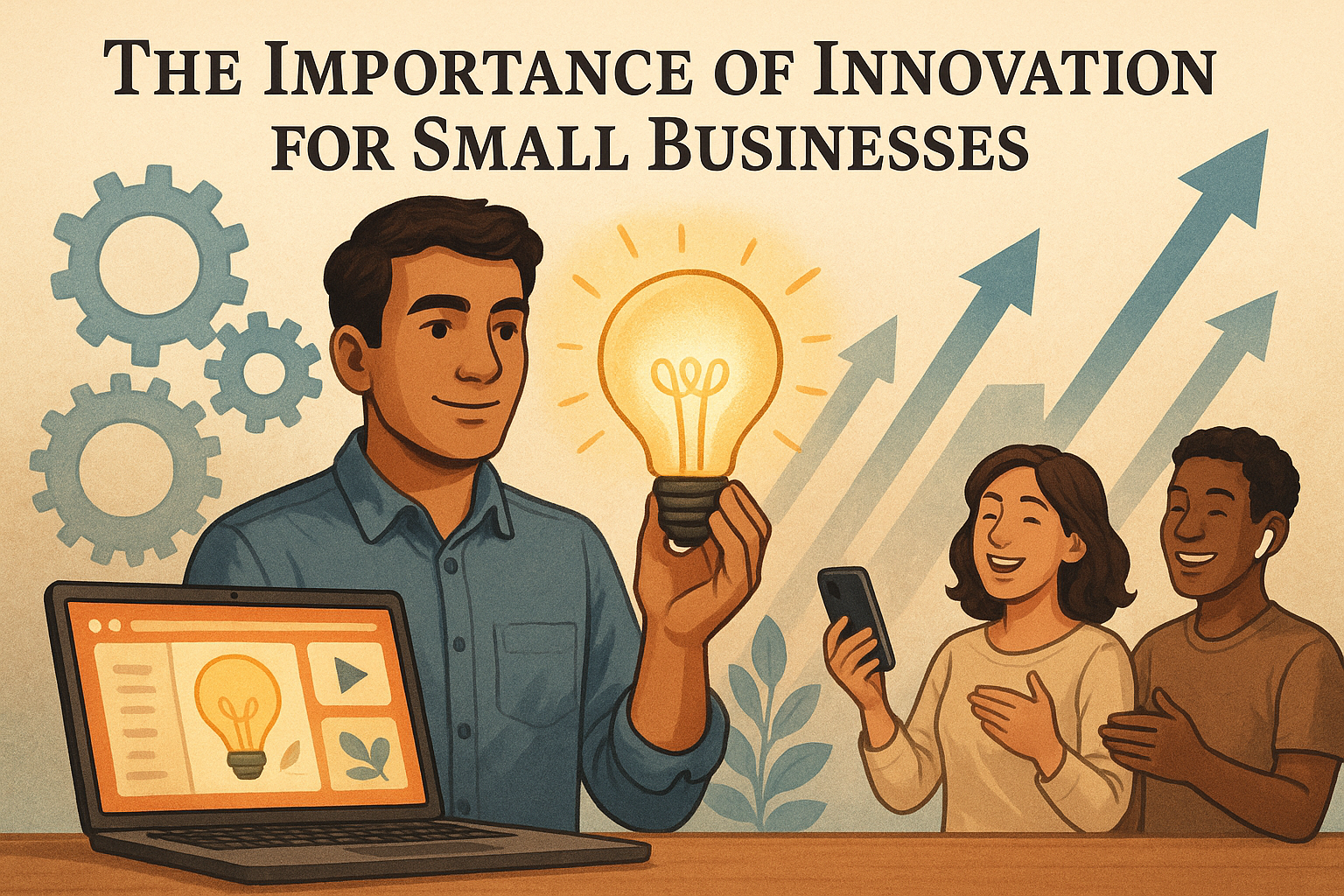When people think about innovation, they often picture large corporations with research labs and big budgets. But innovation is just as important—if not more so—for small businesses. For entrepreneurs with limited resources, innovation provides a way to stand out, attract customers, and grow in competitive markets.
This article will explore why innovation matters for small businesses and how to apply it in practical, affordable ways.
What Innovation Really Means
Innovation is not only about creating new products—it’s about finding better ways to do things. It can be:
- Product innovation: Creating or improving what you sell.
- Process innovation: Improving how you deliver services or products.
- Marketing innovation: Reaching customers in new and creative ways.
- Business model innovation: Finding smarter ways to generate revenue.
For small businesses, even small improvements can have big results.
Why Innovation Is Crucial for Small Businesses
- Differentiation: Innovation helps you stand out from competitors.
- Customer loyalty: Customers value businesses that improve and adapt to their needs.
- Efficiency: Innovative processes save time and money.
- Adaptability: Innovation allows you to pivot during market changes.
- Growth potential: Unique ideas can attract new markets or partnerships.
Without innovation, small businesses risk being left behind.
Step 1: Listen to Your Customers
Most innovative ideas come from customer needs.
Ways to gather insights:
- Ask customers what frustrates them about existing solutions.
- Collect feedback regularly.
- Monitor trends in reviews and social media.
Innovation begins by solving real problems.
Step 2: Improve Your Processes
Even if your product stays the same, your business can innovate in how it operates.
Examples:
- Automating invoices and payments.
- Using online booking systems.
- Streamlining delivery or customer support.
Process innovation reduces costs and improves customer satisfaction.
Step 3: Embrace Technology
Technology makes innovation accessible for small businesses.
Ideas:
- Use social media platforms creatively to reach customers.
- Adopt e-commerce tools for online sales.
- Use free or affordable apps for project management, design, and marketing.
Technology levels the playing field between small and large businesses.
Step 4: Think Creatively About Marketing
Marketing innovation can make a huge difference with little cost.
Examples:
- Storytelling campaigns that connect emotionally.
- Viral social media content.
- Collaborations with influencers or other small businesses.
Creative marketing helps you reach more people with fewer resources.
Step 5: Experiment on a Small Scale
Innovation doesn’t have to be risky. Test small ideas before scaling them.
Tips:
- Run a pilot program or trial.
- Ask a small group of customers to test a new product.
- Measure results before investing heavily.
This way, you learn quickly without major losses.
Step 6: Build a Culture of Innovation
Even solo entrepreneurs can adopt an innovative mindset.
Encourage yourself (and your team, if you have one) to:
- Question existing methods: “Is there a better way?”
- Stay curious and open to learning.
- Reward creativity and experimentation.
A culture of innovation ensures continuous improvement.
Examples of Small Business Innovation
- A restaurant adding QR-code menus and online ordering.
- A local shop offering subscription boxes for repeat customers.
- A fitness coach creating online classes during lockdowns.
These small innovations made businesses more resilient and profitable.
Final Thoughts: Small Steps, Big Impact
Innovation doesn’t always mean inventing something revolutionary. For small businesses, it’s about adapting, improving, and finding smarter ways to serve customers. By listening to feedback, improving processes, using technology, and thinking creatively, small entrepreneurs can stay competitive and grow sustainably.
Remember: the businesses that survive and thrive are not the biggest—they are the most adaptable.
